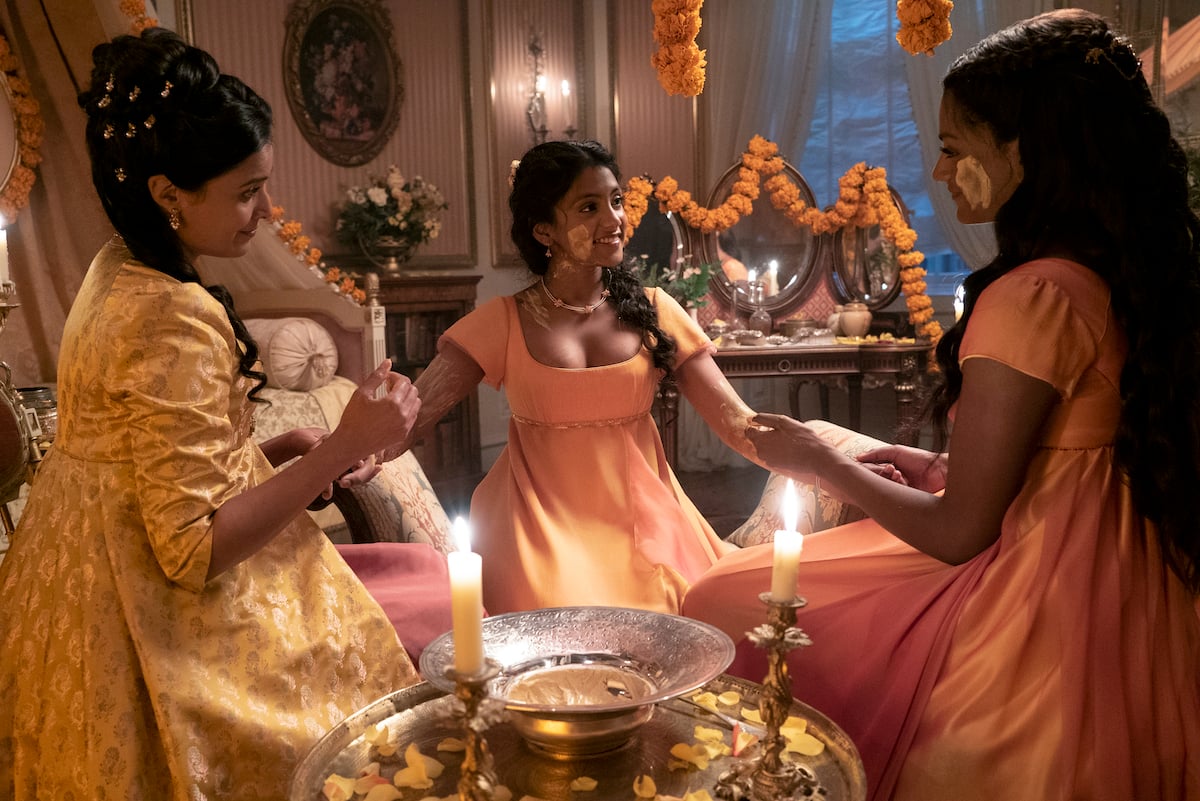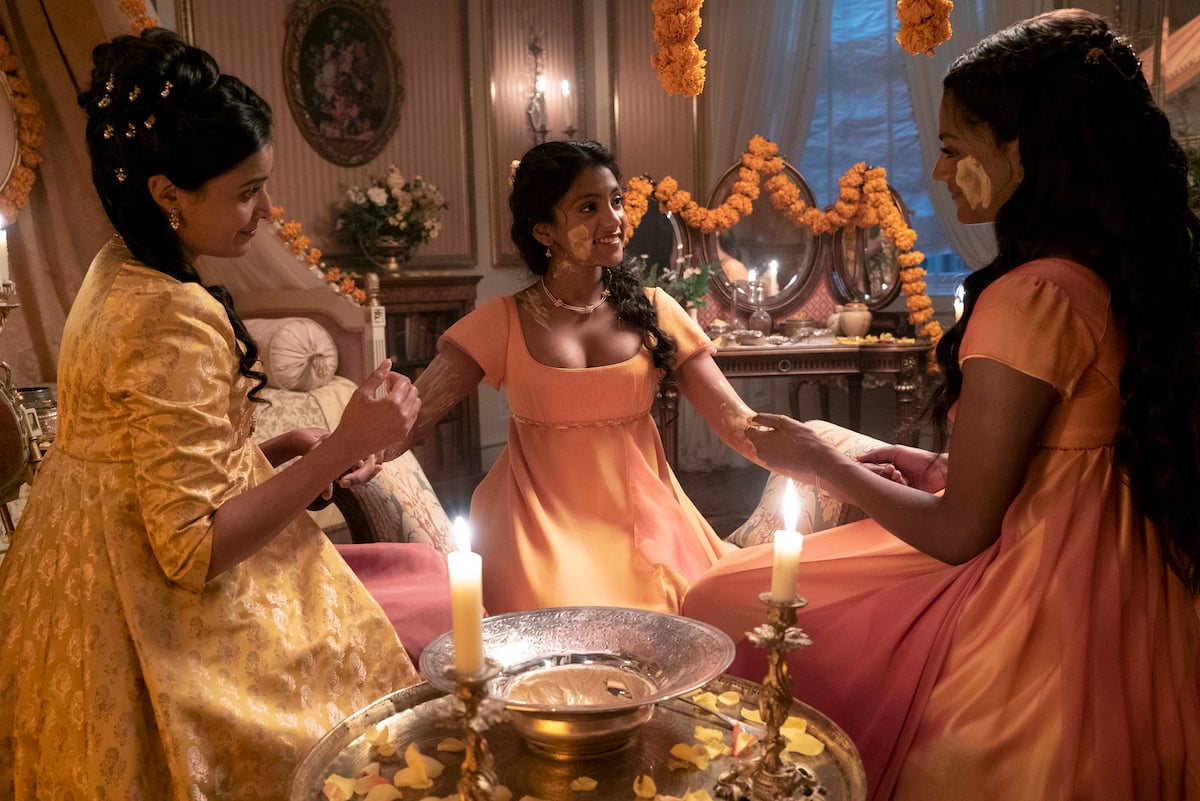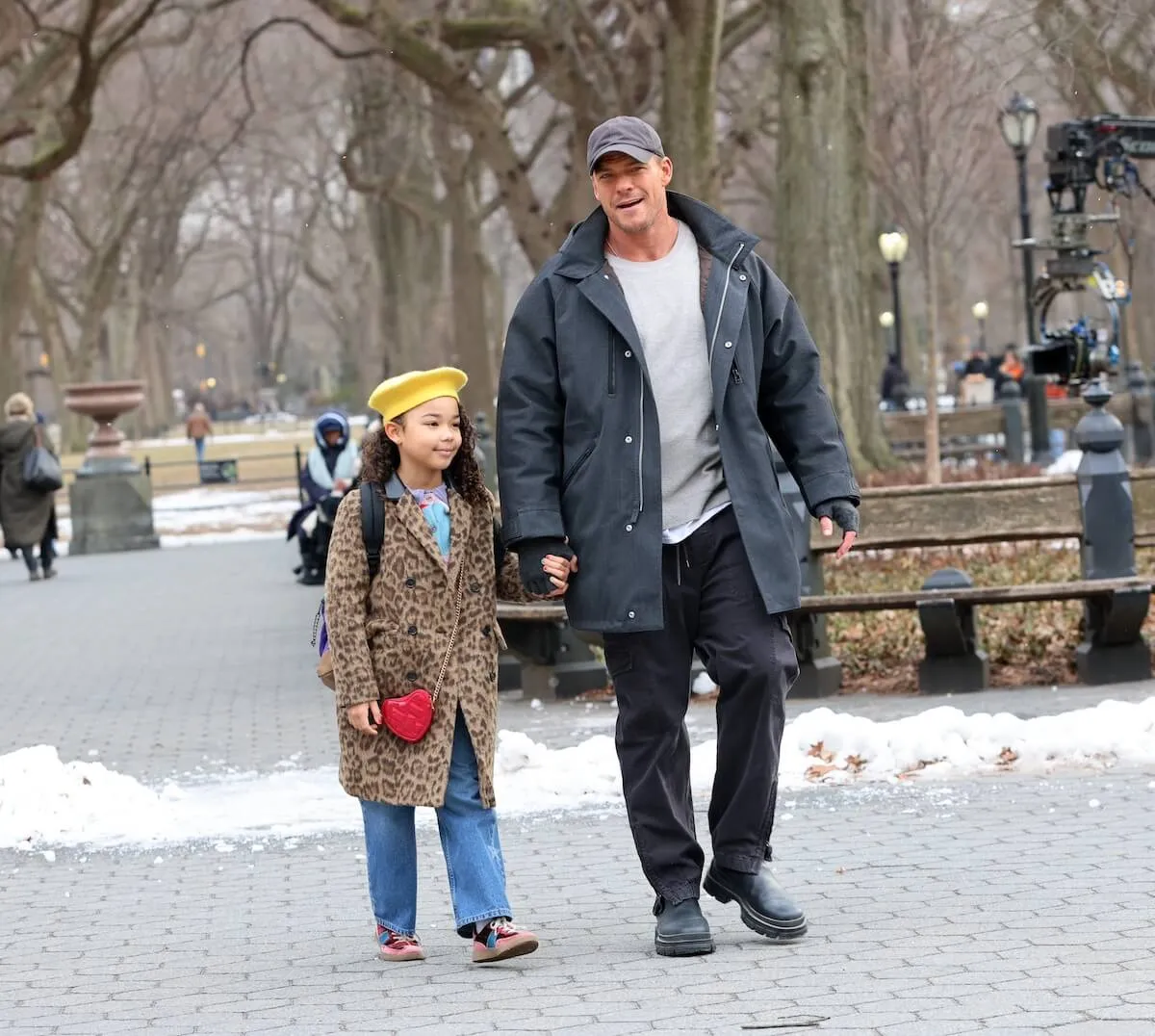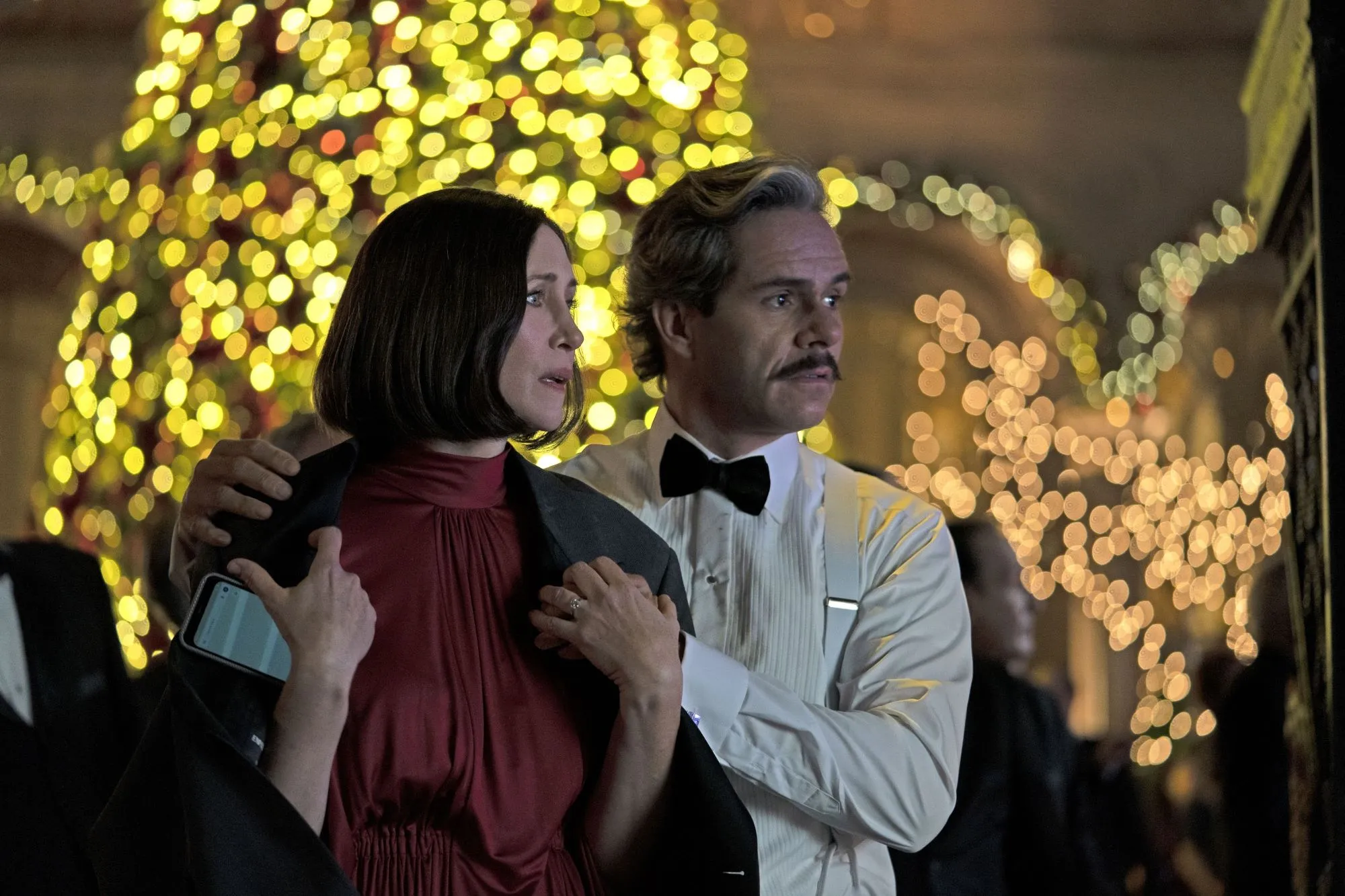
‘Bridgerton’ Season 2: Where Did Edwina’s Pre-Wedding Ceremony With Lady Mary and Kate Originate?
In 2022, Bridgerton, the racy regency drama, came back for a second season and was just as scandalous and engrossing as the first. The Shondaland production made waves in its first season for featuring people of color in a genre that has historically been filled by white actors.
In season two, the Sharma family—Kate (Simone Ashley), her younger sister Edwina (Charithra Chandan), and their mother Mary (Shelley Conn)—added to this diversity in a big way.

Originally introduced in Julia Quinn’s books as the Sheffield family, the debutantes in the Netflix series are recast as newcomers to the ton from India, with Kate’s mission being to marry off Edwina to a good husband.
‘Bridgerton’ Season 2 paid homage to Indian culture
Bridgerton Season 2 features even more of the same romance, froth, and scandal that made the first season so successful, but with a new twist provided by the Sharma family and their incorporation of Indian cultural themes.
Particularly, many South Asians felt “seen” for the first time in the entertainment industry after Simone Ashley was cast as Kate Sharma. Thankfully, the representation is more than just the casting and last names of the characters. The Sharmas’ Indian heritage is represented throughout the episodes through small yet meaningful touches.
In one of the most endearing references, Edwina respectfully refers to her older sister as Didi (a Hindi word meaning “elder sister”). At the same time, Kate calls her “Bon” (Bengali for “little sister”). The Sharma sisters call their dad “Appa,” a term borrowed from Indian dialects, according to MovieWeb.
While many noted that Kate and Edwina are both very Western-sounding names, Anthony, Kate’s future husband, reveals in the series finale that her full name is actually Kathani.
Edwina’s pre-wedding ceremony with Lady Mary and Kate is a traditional Indian event called Haldi
Throughout the season, there are references to Indian culture, including the one right before Edwina and Anthony’s wedding in episode six. While Edwina is getting ready for her wedding, the episode opens with a string cover of the enormously popular Bollywood song “Kabhi Khushi Kabhie Gham.”
The women of the Sharma household get together, all in yellow, to apply turmeric paste to Edwina’s body and face. According to Netflix’s Tudum, the ritual—called a Haldi ceremony—is an age-old Indian custom performed before a wedding to provide good luck to the bride and groom.
During the ceremony, friends and family members bless the couple by smearing them with a paste made of haldi (turmeric), rosewater, and gram flour. Besides its antibacterial and cleansing effects when taken internally or used topically, haldi is thought to rid the body of evil spirits.
Simone Ashley and Charithra Chandran loved creating Edwina’s pre-wedding ceremony scene
Simone Ashley and Charithra Chandran, who play the Sharma sisters in Bridgerton Season 2, have been vocal about how amazing it was to come together and incorporate bits of Indian culture into the show. Speaking to Shondaland about creating Edwina’s pre-wedding ceremony scene, Ashley said,
“The Haldi ceremony in episode six is so much fun, and it’s so beautiful. We filmed it with director Tom Verica. The set was amazing — it had very warm tones of red, orange, yellow, and it had real delicate Indian flower decorations. It was really authentic, and I love that we got to have conversations with Tom about our own personal experiences of these ceremonies or things added within that scene. Filming with Shelley and Charithra felt like family to me, for sure.”
Ashley also praised the third episode for the scene in which Kate uses coconut oil on Edwina’s hair. According to the actor, the scene encapsulated the universal experience shared by sisters around the globe: the everyday interactions that occur between siblings.


